We are so excited to present our first Guest Blogger. Blaise is the Founder of Viva La Cloth, a cloth diaper company featuring easy styles that use great fabrics, simple colors at a price point that makes cloth start-up affordable for all families. As a recent cloth convert myself, I knew absolutely nothing and thought everyone who cloth diapered must be certifiable. I inundated Blaise with questions, and she was more than helpful in getting me started. I started as a means to transition Big M, my then 2 year old to potty training, and then continued with Lil’ M.
If you are at all interested in cloth diapering, want to do your part to help the environment, or save $$$$ (I used to spend $250+ a month with two under 2 in diapers), read on…
Q&A with Founder of Viva La Cloth
What do I need to get started? How many diapers, inserts? What other supplies will I need?
A typical cloth diaper “stash” depends entirely on wash routine and preference. In general, I suggest enough diapers in your rotation to wash every other day. A wash routine of every other day also limits problems in the wash you may encounter with longer lasting rotations. To get through two days of cloth diapering, you need about 18-24 diaper changes depending on your child. Newborn babies easily go through 10-12 diapers per day where as toddlers may only need 6-8 changes per day. You will also want flushable liners for easy poop clean-up, a wet bag (or two), and diaper-friendly detergent – more on these below.
Help me with the lingo – what’s does AIO, AI2, Pocket, etc. mean? What are the pros, cons, and differences between styles?
First of all – diapers are either OS “One Size,” and usually fit from about 10 pounds up until 30+ pounds, or are Sized XS/S/M/L/XL. Each manufacturer has its own size range, so make sure you pay attention to this when you are shopping for cloth. Also, some styles are better for skinny babies, some better for chunky thighs, etc…
AIO – This is an All In One style diaper. This means you don’t need anything additional. It is a one time use diaper that must be washed after each diaper change. The benefit to AIO diapers is that they are one step. They save a lot of time and have little to no prep. The downside is that they tend to have the slowest dry time of all styles. Usually, you can finish drying them in the dryer on low, but always check the wash instructions of your diapers to make sure this is recommended.
If your “stash” is composed of AIO style diapers, you will need 18-24 in rotation to wash every other day.
AI2 – This is an All in Two style diaper. This generally consists of a waterproof cover with absorbent inserts, which attach inside the cover. The cover can be wiped clean between diaper changes and reused 1-4 times. The benefit to AI2 diapers is there are fewer pieces to pack, can be more trim and are often customizable to your baby’s needs. The downside: if you have an exclusively breastfed baby, or even a baby who isn’t eating solids yet, you may have to wash quite a few covers throughout the day due to their BM consistency.
If your “stash” is composed of AI2 style diapers, you will need 18-24 inserts (more if you have an older toddler and need two at a time, which is typical of AI2 style diapers). You will also need 6-10 covers, depending on how often your baby soils the cover. They can be washed by hand in the sink and dry very quickly. So theoretically you can get by with fewer if you are willing to hand wash as needed throughout the day. Rolling them in a dry towel after washing and applying pressure with your hands will speed the drying process.
Pocket – A pocket diaper is similar to a diaper cover in appearance but is usually lined in fleece or suede cloth and has a pocket opening. Like an AIO, Pocket diapers must be washed after each change. A pocket diaper has a sewn in pocket where an absorbent insert is placed (by you) and then removed (also by you) before washing. Inserts are made from various materials. Typically pocket diapers come with microfiber inserts. These cannot touch your baby’s skin, as they are irritating due to their absorbent nature. There are other inserts that can be used in pocket diapers. They can be made from bamboo rayon (terry or fleece) and charcoal bamboo fiber. These are more absorbent than microfiber and safe for baby’s skin. If the insert is topped with fleece, it can go directly against skin providing a layer of wetness protection. Materials that stay wet are cotton, bamboo, and hemp. Charcoal Bamboo is similar to microfleece and provides some protection from wetness. Hemp is a good choice for inserts and is even more absorbent when paired with microfiber. Hemp absorbs slowly and the microfiber helps wick moisture quickly away.
The greatest benefit to pocket diapers is fast dry time (they also last longer if you hang dry), and the ability to customize absorbency based on what, and how much, you stuff in them. The downside to pocket diapers is that they must be stuffed before, and unstuffed after, each use. Not to name any names, but a certain dad and grandfather often forgot to unstuff after diaper changes, so we no longer use them. We all know who had to find and fish out said inserts…
If your “stash” is composed of pocket style diapers, you will need 18-24 pairs of diaper/inserts. Plus, you may need additional inserts based on your baby’s wetting needs. And patience! 🙂
Just to touch briefly on three other types of diapers, here is the rest of what you’ll see out there:
Prefolds – These need a cover to be waterproof – they are 100% cotton or sometimes a blend of bamboo/cotton or hemp/cotton. They are a little bulkier on baby, but are easy to wash and can be dried in the dryer on a medium to high temp.
Flats – The “old school” diaper. Can be made of 100% cotton, bamboo rayon, Hemp/Cotton blend etc… These also need a cover to be waterproof – can be folded a thousand different ways to suit your baby’s size – wash very easily since they are only one layer of fabric, but they take a little more time to prep. They are good for extended travel since they can be washed in a hotel bathtub. Check out www.dirtydiaperlaundry.com. Kim hosts a “Flats Challenge” every spring. It is pretty fun 🙂
Fitted Diapers – these are diapers with many absorbent layers, which are not waterproof. They come in a few varieties – Regular Fitted (need a cover to be waterproof), Hybrid Fitted (needs a cover for nights to be 100% waterproof) there are many work-at-home-mom brands of fitted diapers. They tend to be, by far, the most expensive cloth diapering option, but are customizable and come in a lot of different and unique prints.
Lastly – Wool Longies and Covers. These are paired with a fitted diaper and are used in place of a cover. They are a great solution for babies who are very sensitive to certain materials found in many cloth diapers. They need to be lanolized before use in order to repel moisture back into the fitted diaper.
All-in-one’s are looking pretty good right now, no?
What about g diapers?
G-Diapers are most similar to an AI2 style diaper. The diaper itself consists of 2 parts: the outer cover and the inner snap in pouch. Once the pouch is snapped in, you can use one of two different types of inserts: disposable or reusable. The disposable is flushable or compostable, but needs some prep before doing either. You must buy sized covers based on your baby’s weight and overall size. Many parents report that the legs of g-Diapers are best suited to skinnier thighs. They do not adjust in the rise like one-size diapers do so consider that if you have a chunkier baby.
In terms of environmental friendliness, g-Diapers are definitely a good option. Unfortunately choosing to use the flushable/compostable inserts will not save any money and will cost more than moderately priced disposables. If you choose to use the reusable inserts, it will save more, but still g-Diapers are one of the most expensive cloth diapering options. Their appeal is that they are available at big box stores and are very accessible to family members who may want to support your cloth diapering choice. They are hook & loop (Velcro) closure. Hook & loop doesn’t wash or wear as well as snaps. It is much easier for older children to remove. To combat this issue, g-Diapers Velcro in the back. Make a note of this if you do choose to use g-Diapers. It is always funny to see babies with their diapers on backwards.
How should I pick which diaper is right for me?
I always advise cloth curious parents to try a few styles of diapers before they invest in a full “stash”. I KNEW I would LOVE pocket diapers when I first started so I bought up all the cute ones I could get my hands on. Three months in, I was over them. Fortunately there is a great “aftermarket” for cloth. Cloth diapers can be resold if they are in good condition for upwards of 70-80% of their original value. That is something to consider when you are thinking of the cost differences between disposables and cloth. Disposables do not have a resale value that I am aware of :). Social media sites are a great place to find gently used cloth diapers to try. Check out Facebook – your local area likely has a cloth diapering b/s/t (buy/sell/trade) and you can connect with other cloth diapering moms through those sites as well. For my family, we use AIOs about 70% of the time. We also use flats and covers the rest of the time. I like a little variety in my diaper stash!
How do I wash diapers? How often do I need to wash?
I suggest washing diapers every other day. It makes a nice size load, and you don’t have to worry too much about ammonia build up if you use a product called “Bac-Out” in your wash cycle (see below).
Something else to keep in mind: depending on your child/water type/washer/detergent/style of diapers – you may want to do a soak once every 4-6weeks. This keeps ammonia from building up in your diapers. You’ll know if it you have ammonia build up because your diapers will start to smell like hair color chemicals when your child is wet. If you don’t remove the ammonia, it can eventually cause ammonia burns, which are painful small sores that will take some heavy duty cream to clear up. You can also get rashes from using too much detergent or not rinsing enough. If your diapers come out and smell like anything but water, you need more detergent. You will have to play around with the amount. I suggest starting with ¾ the recommended amount, and going up or down from there. Typically, you will use less than you would with clothing. To do a soak – I recommend a product called “funk rock” by Rockin’ Green – just follow the instructions. It is made specifically for keeping ammonia at bay.
The typical laundry routine is as follows:
1. All diapers need to be unstuffed (if pockets), Velcro tabs secured to their laundry tabs (Velcro is convenient but WILL eat all your diapers if left unsecured), and poop-free! You need to spray off the poop with a diaper sprayer (just the solid portions) into the toilet. Diaper sprayers look like your average sink sprayer, but it attaches to your toilet. You may want to get a “Spraypal” if you go this route so you don’t have to worry about “overspray”.
Or you can use a flushable liner (I suggest Grovia or Imse Vimse – both are large enough to cut in half). They kind of resemble a dryer sheet. The liner goes on top of the diaper inside, and when poop happens, you just have to lift out the liner and flush it and the poop away! This is the easiest way to do it if you don’t want to get too hands on. A liner is NOT an insert or vice versa. A liner is not absorbent in any way. It is simply a biodegradable barrier that lets urine through and catches the solid stuff. If you are breastfeeding your child exclusively, you do not need to do anything with the poop. Breastfed-baby poop is water soluble. You can spray with Bac-Out, or just dump in the wash as is.
2. Add all diapers and your wet bag (inside out) into your washer.
3. Run a wash cycle on warm or cold – this is your “pre-rinse”
4. Run a wash cycle on warm or hot (check your diaper’s wash labels first!), and add soap. You need to use a detergent that is cloth diaper safe. This is a link to cloth diaper safe detergents and also explains more about what you need to look for and what you need to avoid: http://www.pinstripesandpolkadots.com/Articles.asp?ID=263.
Another good one is: http://www.diaperjungle.com/detergent-chart.html Also, this is when you add about ¼ cup of Bac-Out into your wash. It is a natural enzyme and will help keep ammonia under control. I’ve recently seen Bac-out Stain & Odor Remover at my local Target store, but it is also carried at Whole Foods stores and online via Amazon.com.
5. Run a wash cycle (or rinse cycle depending on the type of washer you have). THIS IS IMPORTANT: make sure you check for bubbles. If there are any soap bubbles at the end of the rinse, rinse again. Soap can build up in diapers and cause many problems. To avoid this, rinse, rinse, rinse. Be diligent about making sure you check for the pesky bubbles.
So that’s it. Prep Diapers, Pre-rinse, Wash, Post rinse. Done.
How to dry? Either line/hang dry – covers & pockets this is a must – OR toss in the dryer on the lowest setting if your diaper wash instructions say it is OK.
Diapers should always be washed according to the wash label, or you may void any warranty manufacturers offer. As an example, check out bumGenius’s warranty disclaimers. Many mainstream diaper companies will have similar disclaimers.
What do you do when you aren’t at home?
Running errands with cloth babies is a breeze. All you need is an extra travel-size wet bag. These are very affordable (we like Planet Wise ones) and consist of a zippered pouch that is waterproofed on the inside. When you change your baby, just toss the used diaper in the wet bag instead of the trash. When you get home, pop it, and the used wet bag, into your diaper pail.
Diaper pail you ask? Yes! You can use a trashcan with a flip-top lid or a specialty pail (Ubbi is my favorite). You will need two pail liners (one in use, one in the wash). I’ve found that the Ubbi holds two days of diapers, and then it is stuffed. Perfect for reminding me it’s washday!
What if my child is a heavy wetter?
You’ll know if your child is a heavy wetter if they can completely soak through a diaper in less than two hours. (This is not inclusive of leaks! This is if the fit is correct.) This isn’t a hard and fast rule – some babies just hold it longer than others and when they go, they go. I’ve found that with cloth diapering, if you don’t have a good fit, you can get leaks very easily. Fit is very important. Cloth diapers fit LOW in the back and HIGH in the front. Stay tuned for YouTube demos coming soon!
You need to use the lowest rise setting possible (if you are using “One Size” diapers) so that the inside of the diaper is touching your baby. Leaks can come from extending the rise too soon. The diaper itself should fit like a pair of underwear. The leg elastics should sit high into the groin and you need to check all around the diaper to make sure that there is no “inside” of the diaper showing. If the diaper is completely soaked inside – then you need to adjust your level of absorbency. For pocket diapers, you need to add another insert. For AI2 diapers, adding another insert will help as well. For AIO diapers, unless the diaper uses a pocket or a snap in insert/soaker system, it is more difficult to add absorbency. Usually, adding an insert will solve the heavy wetter issue. Hemp blend and bamboo blend inserts are best for heavy wetters. They hold the most volume, and using hemp under a more quickly absorbing insert (like microfiber) can be a great solution for toddlers and heavy wetters.
What are the benefits to cloth diapering?
Cloth diapering CAN save you money. If you don’t treat it like a hobby and buy a diaper in every print ever made, you can save a ton. It is also the most environmentally friendly option right now. Disposable diapers take 500 years EACH to disintegrate. So every diaper ever used is still on the earth in a landfill. Hmm… My reason for cloth diapering (yes, originally to save money) was because I didn’t want my daughter in 15 years to be like, “MOM, you used TRASH on me?!” Maybe that is crazy, but that is what went through my mind. Also, there are tons of chemicals used in disposable diapers that not only will be touching your baby, but are hard on the environment to produce as well. Using cloth uses a little more water, but honestly, our water bill hasn’t increased more than maybe $5-10 a month since starting cloth. That is still a huge savings.
Why did you start Viva La Cloth?
I started VLC because friends of mine were opposed to the “start-up” cost of cloth diapering. I wanted to make an easy style that used great fabrics, simple colors and was affordable for all families. Also, I started it because I tried many different types of diapers, and I couldn’t get every feature I wanted in an affordable diaper. All in One Style diapers tend to be the most expensive, but our line is comparable to pocket diaper prices.
What styles does Viva La Cloth carry? What are the benefits of each style?
We carry five diaper styles. Four of these are VLC brand. We also carry various snap-in inserts.
We have three One Size style diapers. All three feature a four-step rise. This is critical in achieving a great-customized fit in the legs. It even gets small enough for newborn chicken legs. I used the One Size diapers on my second daughter beginning at 9lbs. They all come with a snap in soaker (Bamboo Terry is a three or four layer soaker and Charcoal Bamboo is a 5 layer soaker) which can be left out for small babies and added in as necessary as your baby gets older.
Avery – This is our AIO Style with a Minky (think fuzzy blanket) soft exterior. It comes in two internal fabrics – Charcoal Bamboo and Bamboo Terry
Dash – This is our AIO Style with a plain, smooth fabric exterior. It comes in Bamboo Terry only at this time.
Charlie – This is also an AIO Style diaper, but it has a pocket you can stuff an additional insert into. Charlie comes with a thicker four-layer insert that you can snap in or stuff into the pocket. It is a great option for nighttime, toddlers and heavy wetters.
Buster – This is our smallest fit – it is a Mini One Size and fits from 5-15+ lbs. It comes in Charcoal Bamboo with a snap in soaker, OR Bamboo Terry with a stuffable pocket. It has a three-step rise for the tiniest fit.
Sleepy Soaker – This is our nighttime insert. It snaps into all of our One Size styles. It is an 8 layer fold-over insert and is a great option for “normal wetters” for nighttime. For heavy wetters, pair it with the Charlie and the insert the Charlie comes with. It will be bulky, but many of our toddler customers love it!
OBVF – Overnight Bamboo Velour Fitted. This is the fitted diaper we currently carry, although it is not my personal design. It is super soft and comes with two bamboo fleece inserts. One snaps in and the other can be positioned where baby needs extra protection. The diaper requires a cover to be waterproof.
If you haven’t considered cloth before, now, you should be well equipped to at least look and maybe test a diaper or two. I remember the first time I put Big M in cloth – I used a VLC Charlie with an insert. I didn’t think for a second it would work – I was shocked by how absorbent it really was, how great it was on her skin (which is uber sensitive) and a total convert inside of a week. Until she hit 35 pounds and outgrew them, she still wore VLC Charlie’s stuffed with an overnight and regular insert at night, well after she was potty trained during the day. Even the hubby was sold when he realized how much money we saved… and VLC has great sales, discounts for buying in bulk, and amazing customer service!
As a special offer for PlaygroundParkbench followers, Blaise is offering 15% off of all VLC orders with minimum $40 purchase through 12/18, 11:59PM PST. Enter DRHU8GF at checkout to receive your discount.
Tell us your favorite brand, or send us more questions for Blaise.
Blaise is the Founder of Viva La Cloth, cloth diapers for discerning babies. She is a work at home mom in love with cloth diapering! Her background, although varied, includes a history of global sourcing and production. She used this experience to create her brand, Viva La Cloth, after she realized many of her friends were opposed to cloth diapering merely because of the “start up” cost. She set out to create a diaper full of upgrades everyone could afford without breaking the bank. You won’t have to hide your receipts from this fluff mail!
Check out her diapers at http://www.vivalacloth.com/
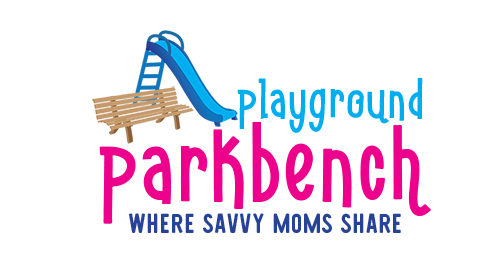
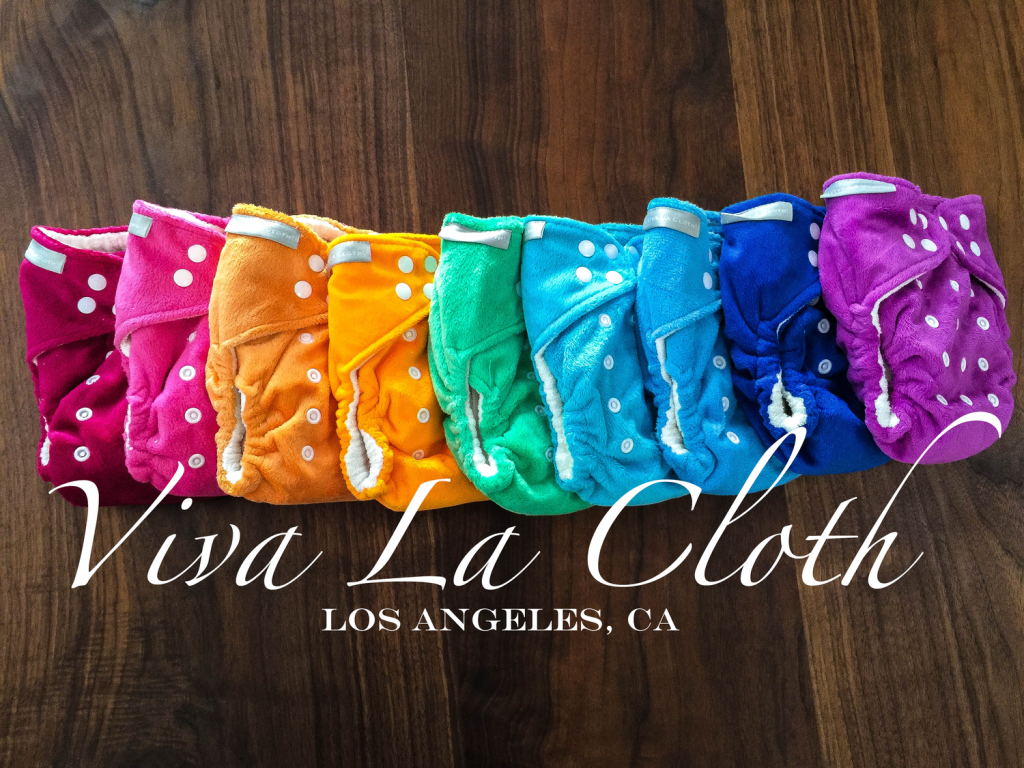










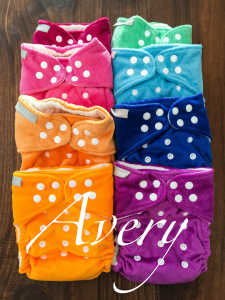
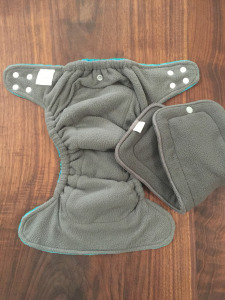
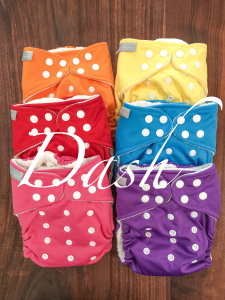
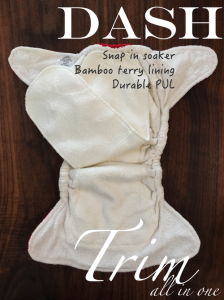
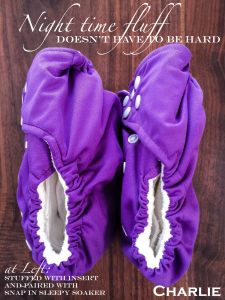

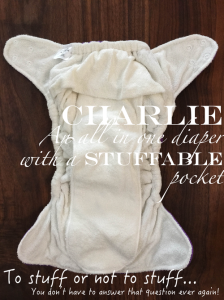
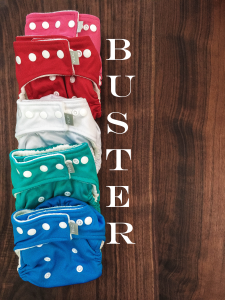
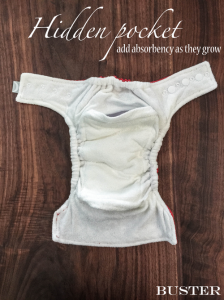

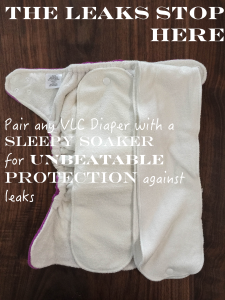
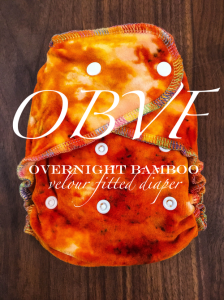

2 comments
[…] ointment) can run upwards of $100+ a month per child. So unless your friend is cloth diapering (which we also highly recommend!), no parent will ever turn away a case of diapers. Check their registry to see what brand, […]
[…] two kids in diapers will send shock waves through your bank account… it drove me to cloth diapers! But not before I looked for the best deal I could find in disposables. The first, most basic […]